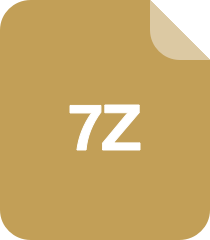yolov3热力图可视化
时间: 2023-09-14 20:11:37 浏览: 84

yolov3目标检测可视化框架(轻量级)+内置火焰识别数据集(2k)/权重(95%)
要进行YOLOv3热力图可视化,需要进行以下步骤:
1. 生成热力图:使用YOLOv3模型进行目标检测,然后将检测结果与原始图像一起输入到热力图生成算法中。这样可以生成一个热力图,其中目标区域颜色更深。
2. 可视化热力图:将生成的热力图与原始图像叠加在一起,然后使用颜色映射将热力图中的颜色范围映射到一个颜色条上。这样可以可视化热力图,以便更直观地观察检测结果。
下面是一个使用Python和OpenCV库实现YOLOv3热力图可视化的示例代码:
```python
import cv2
import numpy as np
# Load YOLOv3 model
net = cv2.dnn.readNet("yolov3.weights", "yolov3.cfg")
# Load image
img = cv2.imread("image.jpg")
# Get output layer names
layer_names = net.getLayerNames()
output_layers = [layer_names[i[0] - 1] for i in net.getUnconnectedOutLayers()]
# Forward pass
blob = cv2.dnn.blobFromImage(img, 0.00392, (416, 416), (0, 0, 0), True, crop=False)
net.setInput(blob)
outs = net.forward(output_layers)
# Generate heatmap
class_ids = []
confidences = []
boxes = []
for out in outs:
for detection in out:
scores = detection[5:]
class_id = np.argmax(scores)
confidence = scores[class_id]
if confidence > 0.5:
center_x = int(detection[0] * img.shape[1])
center_y = int(detection[1] * img.shape[0])
w = int(detection[2] * img.shape[1])
h = int(detection[3] * img.shape[0])
x = int(center_x - w / 2)
y = int(center_y - h / 2)
class_ids.append(class_id)
confidences.append(float(confidence))
boxes.append([x, y, w, h])
heatmap = np.zeros((img.shape[0], img.shape[1]))
for box in boxes:
x, y, w, h = box
heatmap[y:y+h, x:x+w] += 1
# Normalize heatmap
heatmap = heatmap / np.max(heatmap)
# Apply colormap
heatmap = cv2.applyColorMap(np.uint8(255 * heatmap), cv2.COLORMAP_JET)
# Overlay heatmap on image
result = cv2.addWeighted(img, 0.7, heatmap, 0.3, 0)
# Display result
cv2.imshow("Result", result)
cv2.waitKey(0)
cv2.destroyAllWindows()
```
在这个示例代码中,我们首先加载了YOLOv3模型和一张图像,然后进行了前向传递,得到了检测结果。接着,我们生成了热力图,并将其归一化和应用颜色映射。最后,我们将热力图叠加到原始图像上,并显示结果。
阅读全文